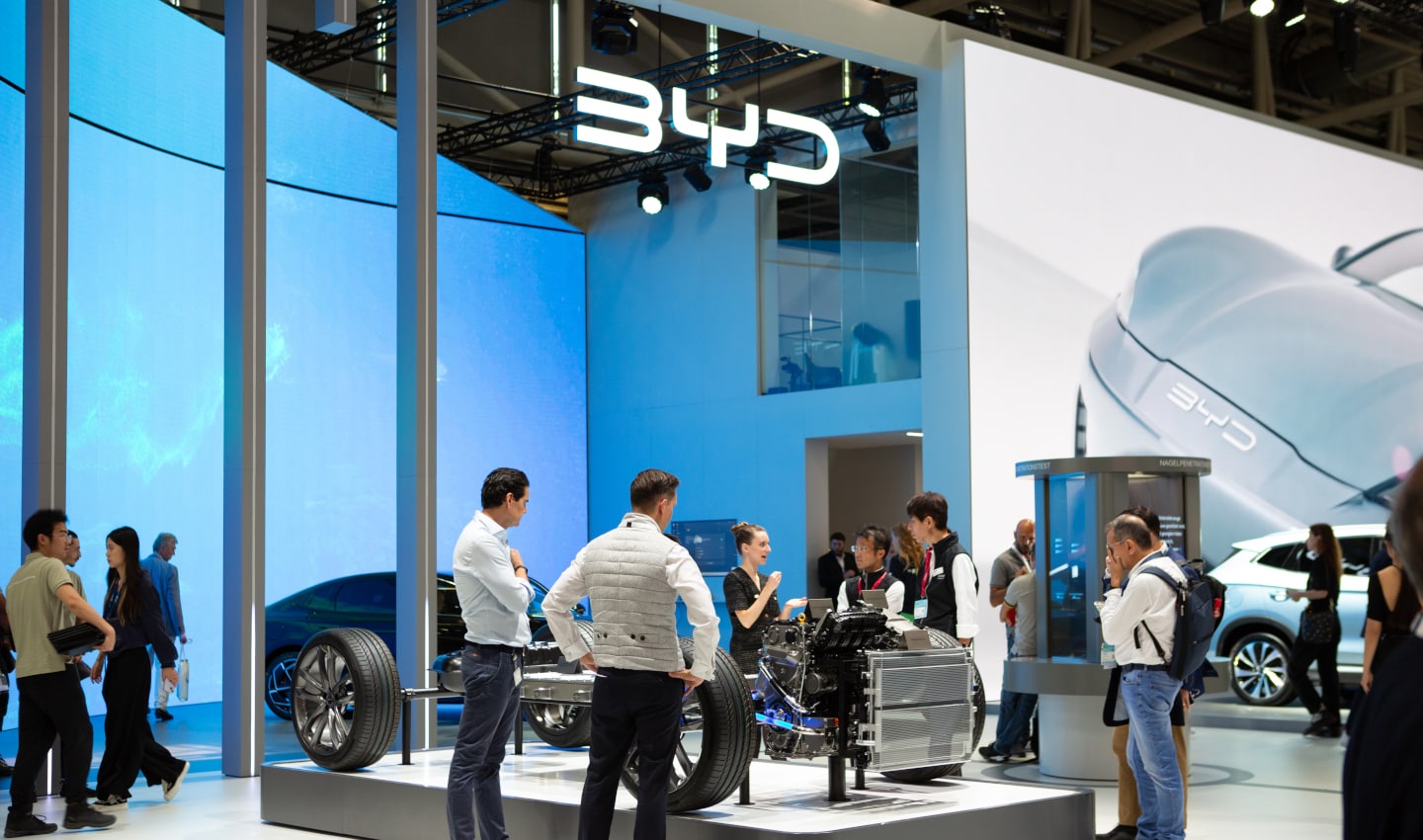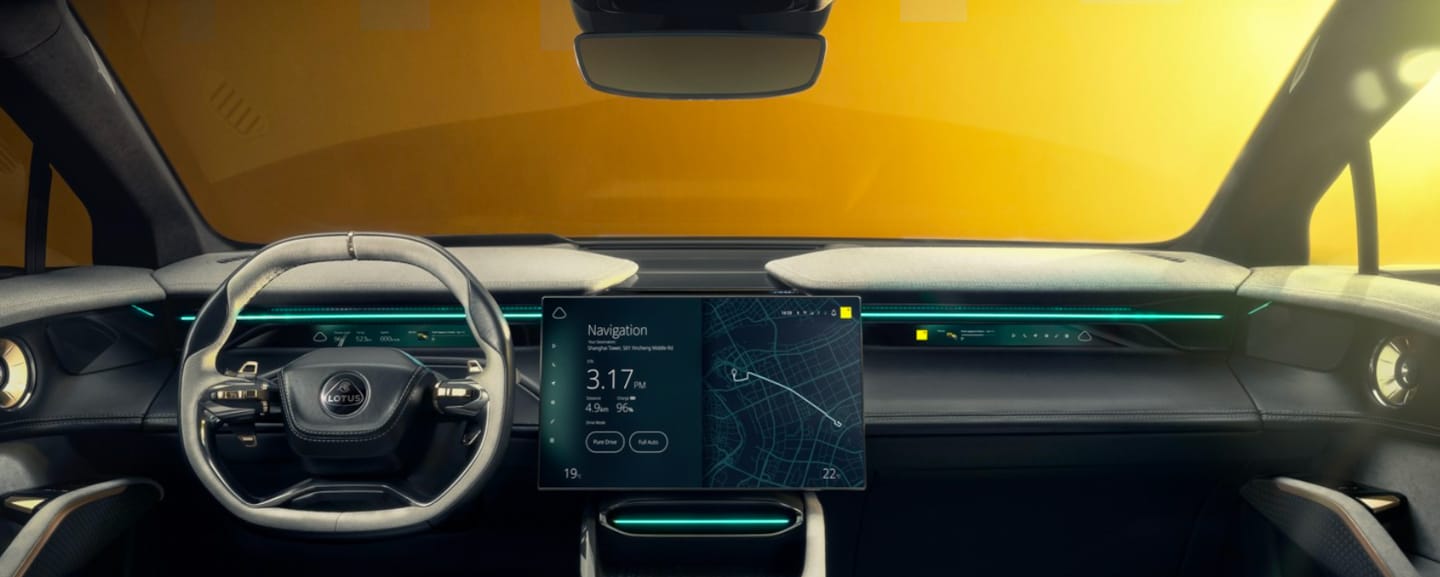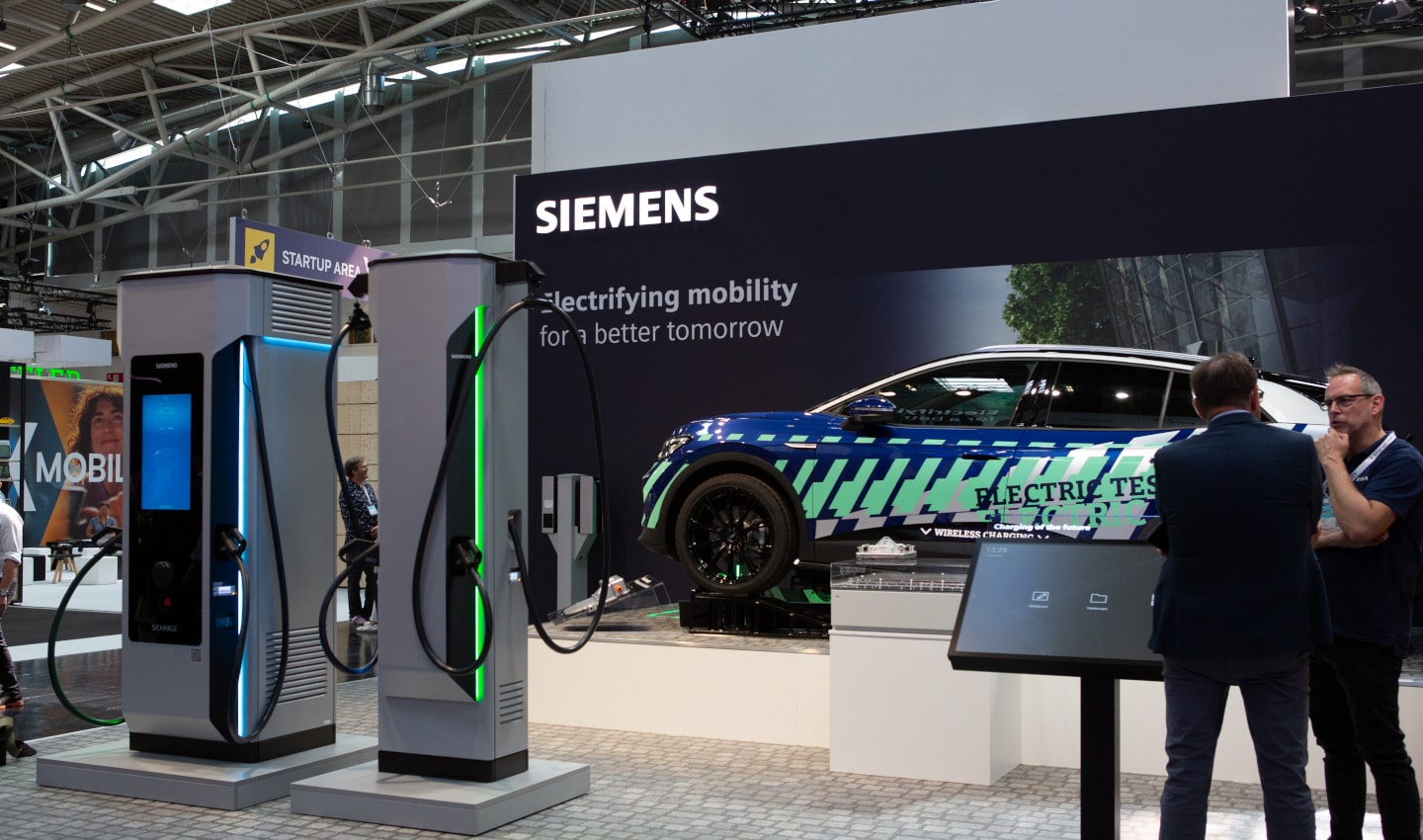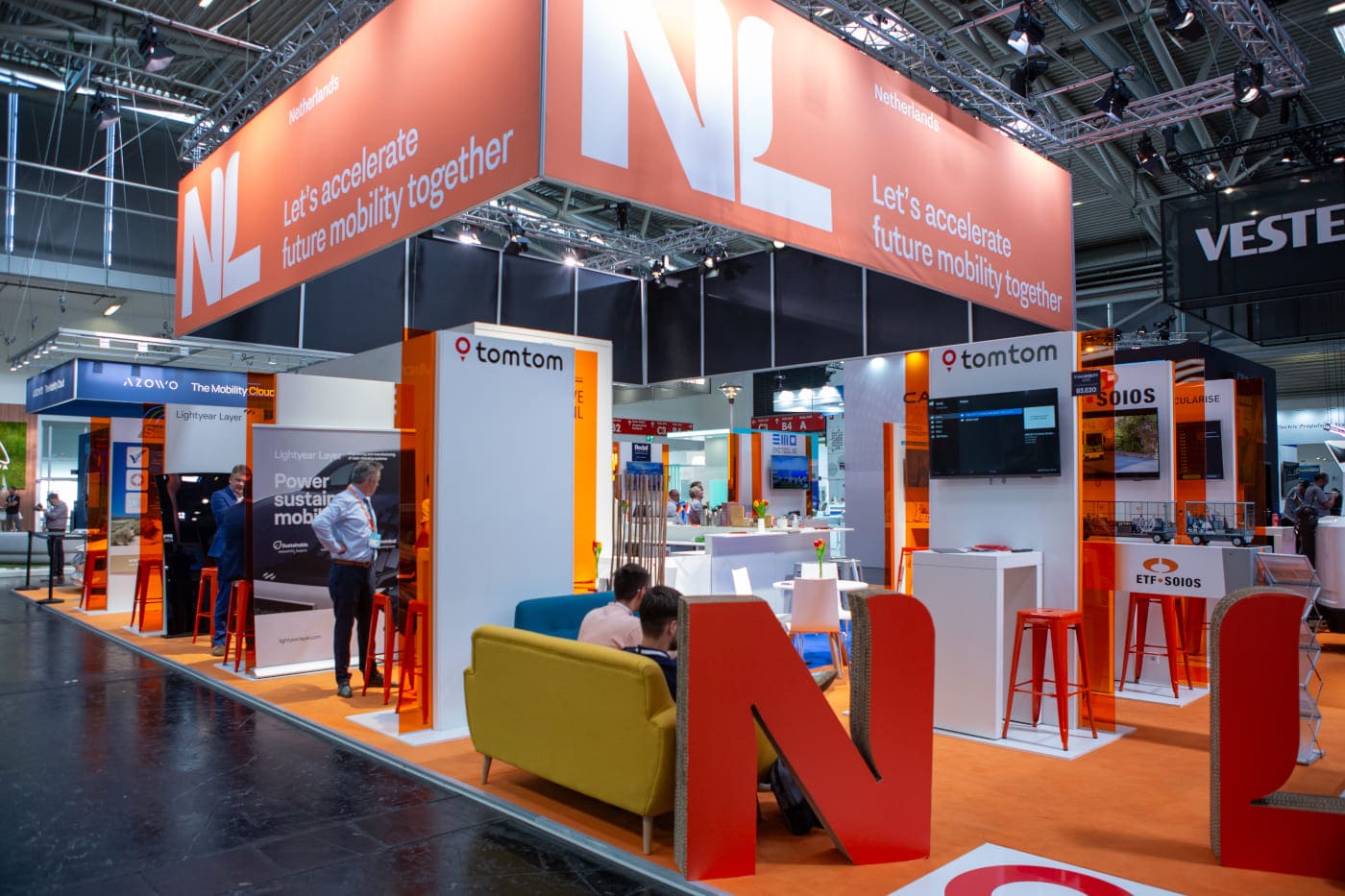
Last week, the International Motor Show (IAA Mobility) in Munich, Germany took place. It’s one of the world’s most exciting mobility trade fairs, attracting carmakers, escooter and micromobility brands, OEMs and emobility service providers (eMSPs) from all over the world. This year we saw some key trends start to emerge, here’s what we learned.
China has arrived
You didn’t have to go to IAA to hear about this story because it was all over the headlines: China-based automotive brands arrived in force to this year’s IAA. Why? Because it’s one of the biggest car making countries in the world, and it’s making a lot of very exciting and interesting vehicles that are only just hitting Europe.
As we scramble for new electric vehicles, more cost-effective options and alternatives to more traditional vehicle brands, China seems to have the goods right now. As The New York Times reports, China had more than seven brands on display at the show.
 BYD is one of China’s biggest automakers. Unlike many western brands, it has made a swift transition from making combustion vehicles to electric vehicles.
BYD is one of China’s biggest automakers. Unlike many western brands, it has made a swift transition from making combustion vehicles to electric vehicles.What’s more alarming is Germany’s response. Executives at big Germany automakers are saying they need to engage “China speed” to catch up with EV production. In years to come, IAA — which was once the stomping ground of German marques — will be the one to watch to see how industry interest in Chinese and German car making plays out.
Silicon makers are the new disruptors
Chinese automakers are clearly well-known for disrupting the western market, but Dan El Baze, TomTom’s Head of Business Development, who attended this year’s event, spotted another group shaking things up: “Silicon players are the new disruptors,” he says.
As vehicles of all types become more advanced, the companies that make the hardware to power the brains of vehicle features such as, in-vehicle screens, vehicle monitoring and high-level ADAS functions, are going to be ever more important.
They’ll be the ones helping carmakers and OEMs push the boundaries of what’s possible. They’re so important, “OEMs can no longer ignore them,” El Baze says.
In-car screens still dominate
Over the past few years, we’re written a lot about in-car screens and their experiences. The general trend has seen carmakers add lots of screens, bigger central displays, passenger displays and even rear-passenger displays, to their vehicles.
You’d be forgiven if you’d thought carmakers couldn’t get any more creative with their in-vehicle display placement and sizing. But it seems they’re not done yet.
At this year’s IAA, carmakers showed off swathes of unique in-vehicle displays, including screens the entire width of the dashboard that curve around the driver from a-pillar to a-pillar and portrait displays that cascade and drape down the central console. This is all alongside the more common tablet style displays.
 Samsung’s portrait curved display. Curving a display like this can make information easier to see, and help split the screen up into useful areas.
Samsung’s portrait curved display. Curving a display like this can make information easier to see, and help split the screen up into useful areas.“Not only are [in-car] UI designs becoming more tablet-like, but so are the interactions. There are consistent home buttons for returning to the main page and many vehicles support the ‘long press’ to edit widget views,” Christina Yu-Ting Wang, TomTom Design Lead, says.
Carmakers aren’t simply adding screens and making them bigger, though, they’re now looking much deeper at the experience and what makes sense for the specific vehicle. British Marque Lotus, a company known for simplicity, presents drivers with an ultra-small instrument cluster, with a larger accompanying central screen in its Eletre — the VW ID.7 and the VW ID.Buzz have similar setups. They’re also adding head-up displays too.
 Credit: Lotus. The Lotus Eletre has a small display cluster for the driver and another for the passenger, and a larger central screen.
Credit: Lotus. The Lotus Eletre has a small display cluster for the driver and another for the passenger, and a larger central screen.“The head-up display has become widespread hardware in cars at IAA. Premium brands have it, but so do high-end vehicles from mass-market brands like VW and Opel,” Wang adds.
Overall, Wang says that screen experience and display performance is getting better. They’re smoother and more detailed. As a result, UI designs are easier to see. Adding screens is one thing, but we also need to make sure they’re a delight to use.
eMSPs are putting themselves out there
Providing the infrastructure for electric vehicle charging is a complicated game. It’s not just about connectors, compatibility and kilowatts. There’s a lot that goes on in the background when it comes to charging, especially when it comes to finding chargers, connecting vehicles to chargers, paying for a charging session and disconnecting from a charger. This gets even more complicated when you start charging in foreign countries and paying from an account in your home country.There’s a lot of unseen communication that goes on between vehicle and charger and between the charger, the payment service and the customer. Crucial in delivering this part of charging infrastructure are electric mobility service providers, or eMSPs for short. eMSPs play a central role in making sure drivers can find chargers, ensuring chargers and cars can communicate with each other and they’re crucial in facilitating payment.
 Siemens presenting its charging solutions for electric vehicles. Siemens is no stranger to electrified transport and renewable energy.At IAA this year, “Emobility services and payments were there confirming their clear interests and support for in-car payments and services,” El Baze says. “These companies are incredibly important for how the auto industry is evolving. Anyone working in developing electric vehicles, infrastructure or related tech, needs to know about eMSPs.”
Siemens presenting its charging solutions for electric vehicles. Siemens is no stranger to electrified transport and renewable energy.At IAA this year, “Emobility services and payments were there confirming their clear interests and support for in-car payments and services,” El Baze says. “These companies are incredibly important for how the auto industry is evolving. Anyone working in developing electric vehicles, infrastructure or related tech, needs to know about eMSPs.”IAA delivered, as always
IAA has long been one of the most exciting auto shows on the calendar. Unlike other auto shows, which have struggled to come back with full force following the pandemic and are struggling to find their way in a world of changing mobility, IAA is still proving to be a stalwart event — despite its downsizing and relocation in recent years.“It has become the place to be as we enter the second half of the year. IAA is a must attend event,” El Baze says. “It’s possibly the most important European trade show for automotive, still.” TomTom's stand at IAA, Munich, 2023.IAA has a long history, and it’s been the place that some of the world’s most iconic vehicles and their tech have been unveiled to the public. The global pandemic proved difficult alongside a relocation of the event, but it’s seemingly going strong. IAA has managed to adapt over its long history and maintain relevance in a world of mobility tech that’s ever-changing.If one thing is for sure, IAA will have to continue changing and adapting alongside the fast-changing world of mobility.
TomTom's stand at IAA, Munich, 2023.IAA has a long history, and it’s been the place that some of the world’s most iconic vehicles and their tech have been unveiled to the public. The global pandemic proved difficult alongside a relocation of the event, but it’s seemingly going strong. IAA has managed to adapt over its long history and maintain relevance in a world of mobility tech that’s ever-changing.If one thing is for sure, IAA will have to continue changing and adapting alongside the fast-changing world of mobility.People also read

3 things we learned at IAA Mobility Munich this year
)
How UX plays a role in the automotive industry
)
Inside TomTom’s EV vision: What’s a mapmaker got to do with electric vehicles?
)
EVs were outselling gas cars 100 years ago…what happened?
* Required field. By submitting your contact details to TomTom, you agree that we can contact you about marketing offers, newsletters, or to invite you to webinars and events. We could further personalize the content that you receive via cookies. You can unsubscribe at any time by the link included in our emails. Review our privacy policy. You can also browse our newsletter archive here.
)